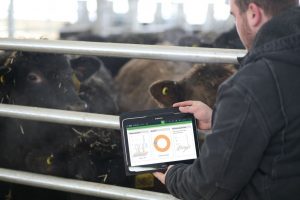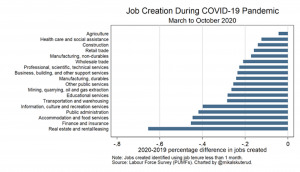The theme of the 2nd annual AgSmart agricultural education event hosted by Olds College on August 10-11, 2021 was Growing Profits With Data, which served as an excellent opportunity to demonstrate the entrepreneurial start-ups poised to shape Alberta’s agricultural industry as well as the technological advances and Smart Farm concepts used to train the next generation of producers.
Gentec staff weren’t the only ones eager to interact with the world again. Despite mixed weather, over 1,000 attendees made the trip to attend one of the 96 sessions, stop by one of the more than 100 exhibitors or visit one of the many food trucks and catch up with the many others who share a common interest in agriculture.
Perhaps the most surprising revelation of the event was the breadth and variety of expertise in attendance. Sessions ranged from how information management systems could be used to improve relations with your banker; an organic bio-stimulant venture hosting and collecting the “excrement” (their term) of 17 million earthworms to use as the perfect plant food; a camera company using artificial intelligence and facial recognition to monitor herd welfare; and of course—the benefits of DNA applications. Speaking of which…
Dr. John Basarab, Gentec’s new Head of Beef Operations, led a session on the value that genomics tools can deliver to beef producers and emerging tools for the commercial beef producer. The session introduced two new tools targeting the commercial beef producer that have been developed as part of our ongoing research and proprietary databases of Alberta beef herds: the Feeder Profit Index and the Replacement Heifer index. A more thorough review of the presentation and how it aligns with the Canadian Beef Strategy can be found here.
John was joined by Cameron Olson and Lisa McKeown who helped host our live-animal Efficient Heifer Competition. Each hosted several information sessions featuring 6 of the most attractive heifers many in the audience had ever seen. The take-away message was that true beauty is more than skin deep—in this case, genomic deep—since the session highlighted the economic benefits of hybrid vigour in terms of fertility and low residual feed intake, which are invisible to the naked eye.
And what could be more beautiful than the ability to select a feed-efficient, fertile heifer with a greater statistical likelihood of producing a healthy calf year in and year out? Following the presentation, attendees were encouraged to stop by the Gentec booth to enter their newly-informed guess in the competition, with one correct contestant to win a prize.
At the Gentec booth, the team (Kira MacMillan, Clinton Brons, Gentec CEO Graham Plastow and Board Chair David Andrews) were delighted to meet so many interested delegates, new faces and old friends. Traffic at the booth was continual during the event, allowing us to connect with new producers who just happened to pass by, joined by those who specifically sought us out as a result of John’s presentation (above) or to enter the Efficient Heifer Competition. We were delighted that Jennifer Stewart-Smith (Beefbooster CEO) joined the team on both days to help introduce the “arm-chair rancher” project as well as taking in some of the other exhibits.
Gentec had the opportunity to say Thank You to a number of individuals and organizations who have enabled our mission to support the beef industry over the years. Thus, we were pleased to host special guests including Cherie Copithorne-Barnes, the Hon. Dan and Kathy Hays, William Torres from Vytelle (formerly GrowSafe), Doug Wray, the Foothills Forage and Grazing Association, and Joe Lofthouse from Highway 21 Feeders.
Phil Norregaard and his son Mark attended on behalf of Foothills Forage Association. Mark turned out to win the Efficient Heifer Competition, which resulted in a visit from Gentec at their Twin Lakes Ranch to deliver the grand prize of a Weber Smokey Mountain Cooker.






